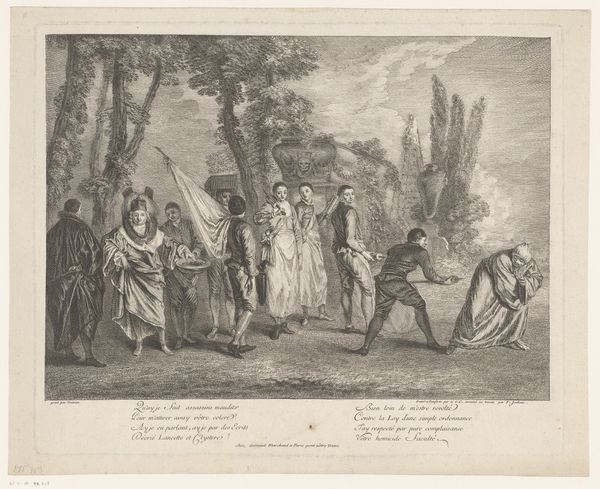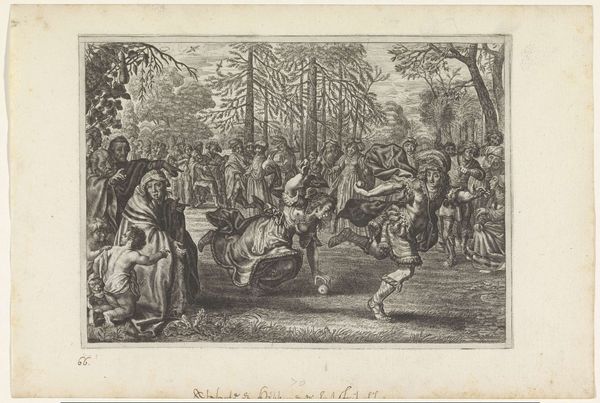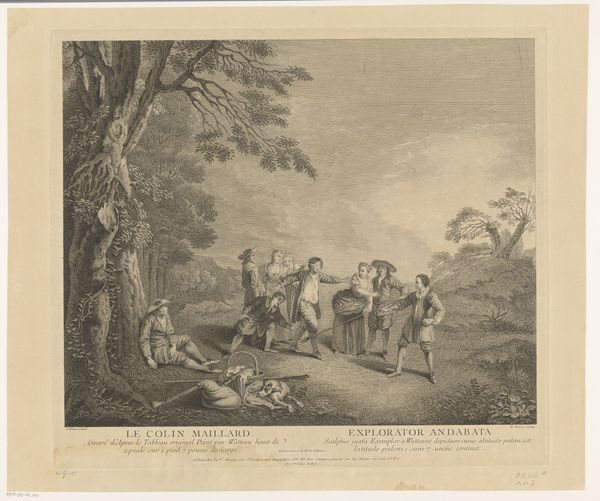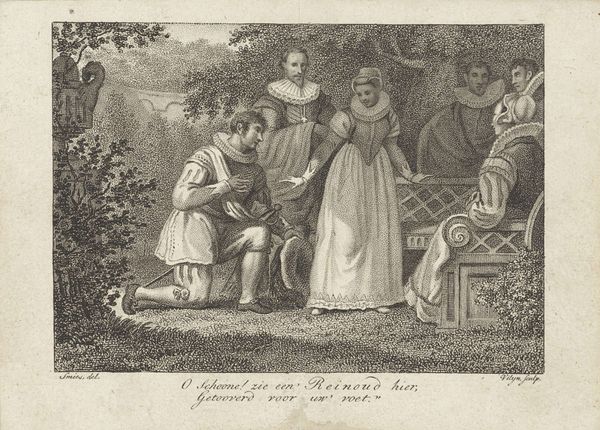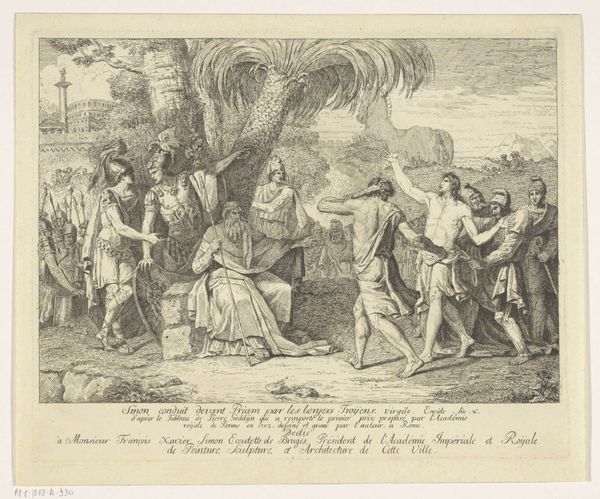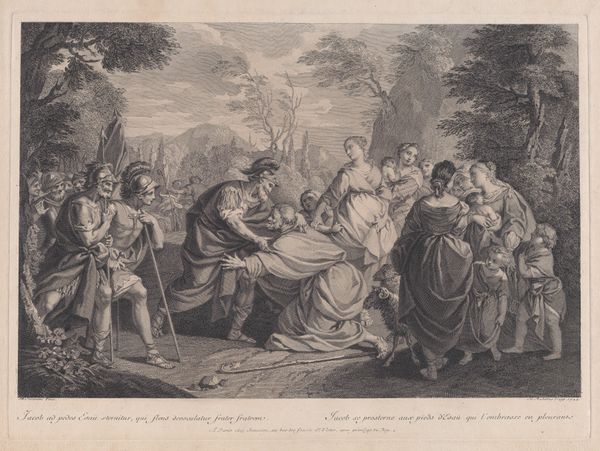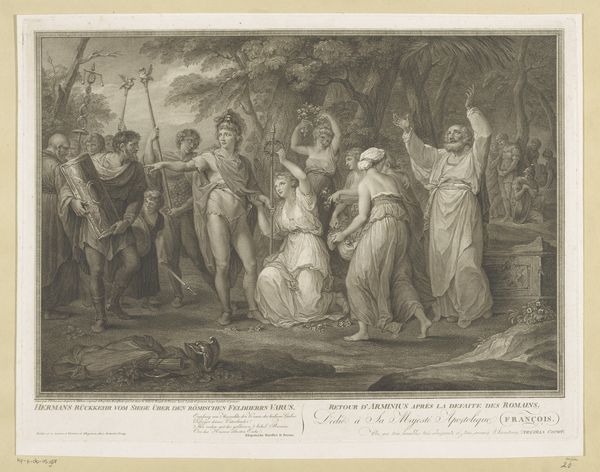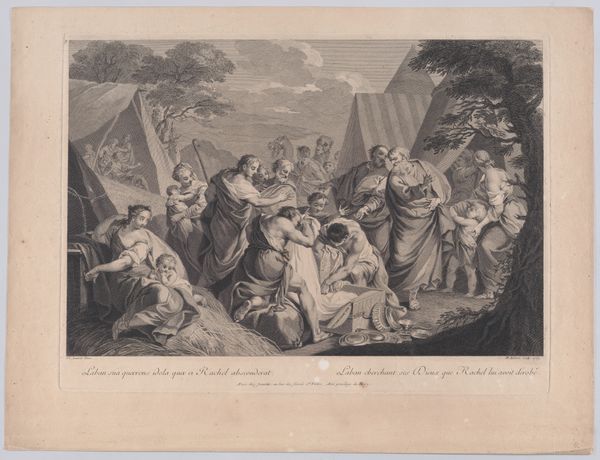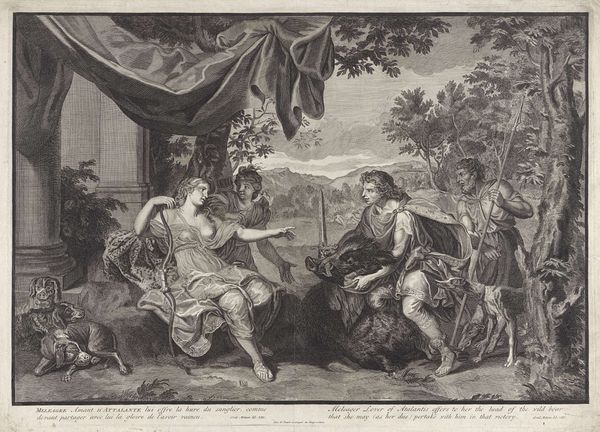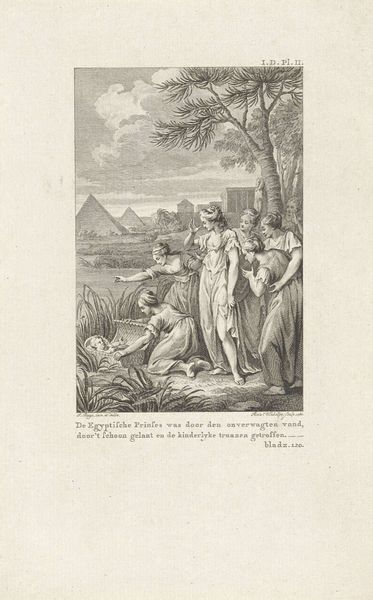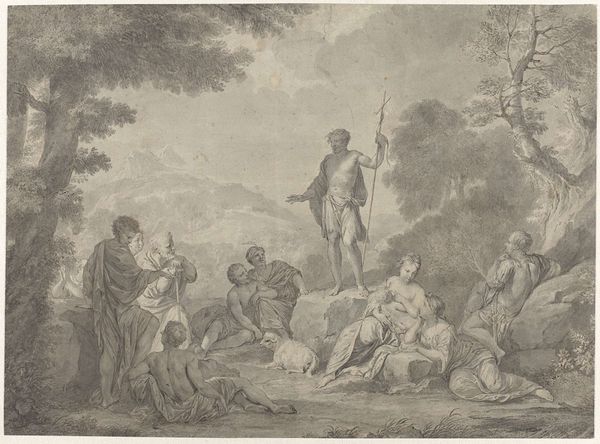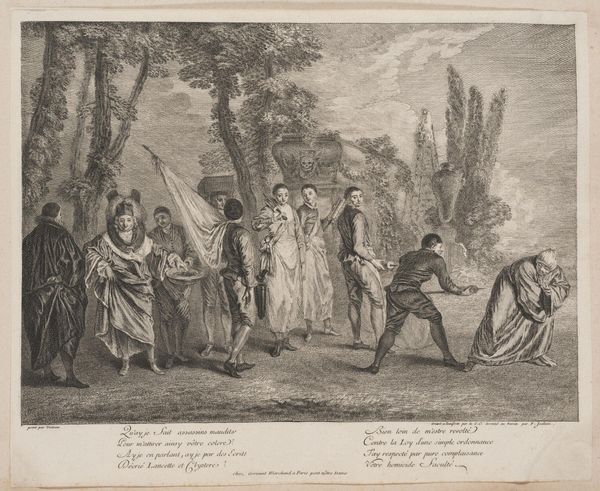
print, engraving
#
neoclacissism
# print
#
old engraving style
#
landscape
#
classical-realism
#
figuration
#
form
#
line
#
genre-painting
#
history-painting
#
engraving
Dimensions: height 98 mm, width 147 mm
Copyright: Rijks Museum: Open Domain
Ludwig Gottlieb Portman made this etching titled 'Landschap met herders en herderinnen'—Landscape with Shepherds and Shepherdesses—sometime before 1828. Etching is an intaglio printmaking technique, meaning that the image is incised into a metal plate, typically copper or zinc. First, the plate is coated with a waxy, acid-resistant substance. The artist then scratches an image into the wax, exposing the metal. Next, the plate is immersed in acid, which bites into the exposed lines, creating grooves. The longer the plate sits in the acid, the deeper the lines become. Once the etching is complete, the plate is inked, and the surface is wiped clean, leaving ink only in the etched lines. Damp paper is then pressed against the plate, transferring the ink to the paper and creating the print. The labor-intensive nature of etching contrasts with the pastoral scene depicted, raising questions about the relationship between artistic production and idealized visions of leisure. While the figures in the landscape appear carefree, the creation of the artwork itself involved significant skill and effort.
Comments
No comments
Be the first to comment and join the conversation on the ultimate creative platform.
